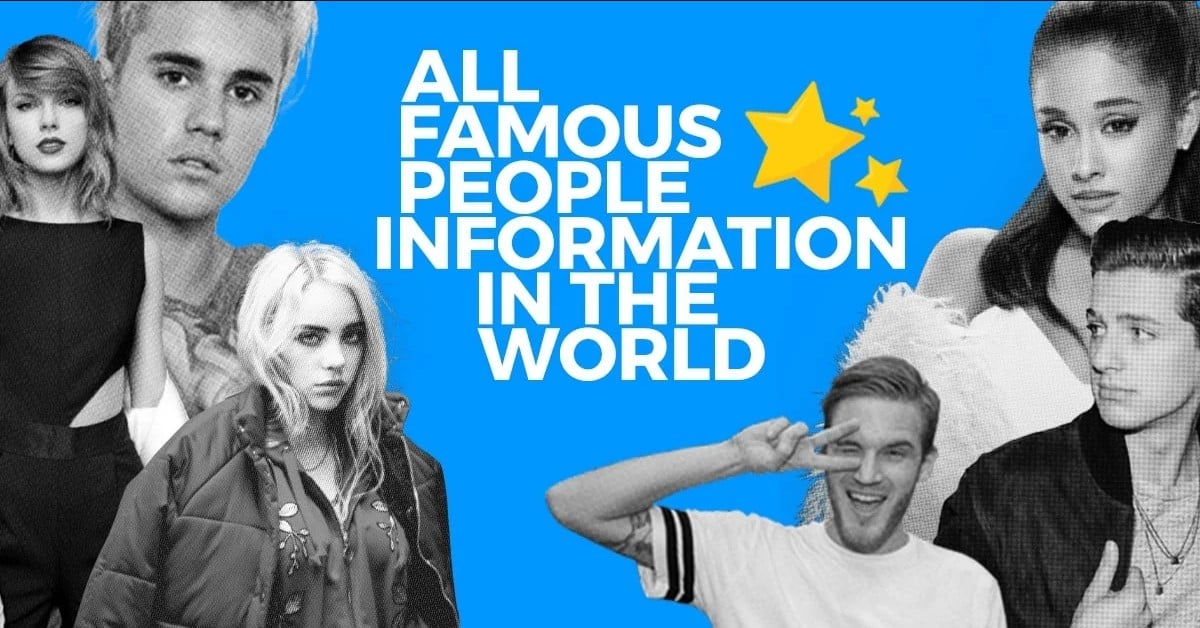The brutal attack of three young girls at a dance class justifiably caused national outrage in the summer of 2024. In its aftermath, the media seemed to scramble for the reasons why the attack took place. Amongst mental health issues, Autism Spectrum Disorder (ASD) emerged as a key topic of conversation. It is not unusual for sensationalised media reports to emphasise a link between extremism and neurodivergence, usually without evidence (see also Wijekoon et al., 2024). Well-known symptoms of ASD are often referred to as risk factors when considering cases like Rudakubana’s, such as special interests and social isolation. There are similarities in other examples of radicalised actors experiencing mental health and disorder, such as Valdo Calocane . In these cases, and many more, a system has failed to help and care for individuals with differing mental states to the societal norm. Despite this, it is important to acknowledge that whilst autistic and mentally non-normative individuals can be susceptible to radicalisation and subsequent extremism, there is no direct, causal link.
The purpose of this article is to explore far-right radicalisation in relation to autistic individuals. It begins by highlighting possible explanations as to why autistic people may seek refuge in the online world and how this could leave them vulnerable to exposure to extremist groups. Alongside this, using case studies, the article investigates debates around a sense of agency and the capacity to understand one’s actions in autistic people. Furthermore, it explores the phenomena of “Weaponised autism”, which concerns far-right groups targeting actors online that exhibit ‘autistic traits’ with an intention of exploiting them for the purpose of furthering their rhetoric. To understand why this notion has emerged, the article refers to theories around social interaction and influence, as well as the comparison of pull and push factors for autistic and non-autistic actors within their respective radicalisation pathways.
The Intersection between Online Radicalisation & ASD: Community over Causation
It is valid and necessary to consider how attributes of ASD may contextualise an individual’s radicalisation path. This contextualisation may help to inform risk assessment and management, potentially helping us to spot autistic individuals on this path and prevent it from spiralling any further (Salman et al., 2023). According to the NHS, autism prevalence in England is 1.32% of the general population, compared to roughly 33% of 437 cases of ‘radicalised extremists’ with ASD, depression and/or personality disorder (Kenyon, 2023). Similarly, a UK based report showed an abundance of autistic people in counter-radicalisation programmes, such as Prevent (Wijekoon et al., 2024). These statistics may not be entirely reliable, however, as somewhere between 150,000 and 500,000 people in England are autistic but remain undiagnosed. Despite the prevalence of autism in extremism perhaps not being as clear-cut, concerning cases still exist. An example of this is Jake Davison, a violent extremist who was diagnosed with ASD and was known to view and post a “number of disturbing posts, videos and content” surrounding ‘incel’ culture.
As confirmed by extremism and terrorism scholars, instead of looking at a single cause, we should think about a wider array of pull and push factors that might lead someone to commit an act of terrorism (Gill and Corner, 2017). It is well-known that ASD commonly results in social isolation, which often leads to autistic individuals finding refuge online. It is natural for an ostracised group to seek a sense of community and belonging, and the internet particularly appeals to autistic people due to its organised structure (Benford and Standen, 2009; Gillespie-Lynch et al, 2014). There are different ways of viewing community: as a form of association, an expression of ideology, and as a set of unifying symbols (Thompson, 2001). These notions all place a specific importance on shared values and interests, which promotes a sense of belonging. Alongside this, the internet allows new ways of creating and expressing identities, providing new spaces for self-representation (Stockl, 2003). Perhaps it makes sense for autistic people to find comfort in these innovative and open communities, particularly when facing marginalisation in the offline world; with the systemic ableism facing autistic individuals in their daily life contributing to their feelings of stigma and ostracisation, thus forcing them to find social isolation in their personal spaces and an escape in online spaces.
This could provide one of many reasons for why Jake Davison and similar autistic actors found himself within ‘incel’ culture online. However, if an autistic actor’s radicalisation pathway is influenced by these external measures, it leads into questions surrounding an autistic actor’s sense of agency and their capacities of understanding. In 2015, for example, Peyton Pruitt was accused of Islamist terrorism by the FBI for sending bomb instructions to someone. Pruitt spent the majority of his time online, and was listed as functioning at the level of an 8-year-old child. It was a terrorist group that led to his radicalisation, although his defence team believed that he could not fully understand what he had become involved in. In 2016, Pruitt was found not guilty by reason of mental defect. This is perhaps a clear example of an autistic actor being subjected to unfair power balances, as the social isolation he faced potentially led him to spending an abundance of time online, where he might have found himself drawn to a community that offered him a sense of purpose and community. However, in a separate Canadian case, prominent incel terrorist Alek Minassian was also arrested for terrorism charges. His charges were much more intense than Pruitt’s – with Minassian accused of 10 charges of murder and 16 of attempted murder – but his team followed the same line of defence, stating that he was not “criminally responsible due to his autism spectrum disorder”. Minassian was found guilty, and the judge dismissed this claim.
To answer these questions and attempt to explain the different outcomes in these cases, it is useful to employ theories surrounding agency. A sense of agency can be defined as “the experience of initiating and controlling one’s own actions and producing desired changes in the world via these actions” (Zalla and Sperduti, 2015: 2). Two prevalent agency models suggest that retrospective and prospective mechanisms together are central to a sense of agency. Retrospective mechanisms concern a feeling of agency inferred after action execution whereas prospective mechanisms concern the matching of an agent’s intentions and the outcomes of an action. Zalla and Sperduti (2015) suggest that autistic people may experience an abnormal sense of action control which limits prospective mechanisms when action planning, therefore limiting an overall sense of agency. This may result in autistic people finding their sense of agency in retrospective reflection.
Additionally, the theory of mind is often used to depict autistic people’s deficits in social interaction and competency. Language abilities have causal relations with theory of mind abilities (Kimhi, 2014), implying that improved language skills lead to similarly improved theory of mind abilities. This suggests a quantifiable autistic trait that could help one understand the extent of capacity and agency within an individual autistic actor. A lack of language and theory of mind ability could exacerbate social isolation, which may potentially leave them vulnerable to radicalisation. Alongside this, the theories around executive dysfunction and weak central coherence both contribute to struggles with theory of mind abilities and impact an autistic individual’s capacity in understanding the extent of situations, social interactions, and their own actions. However, as Kimhi points out, findings vary across ages and differing contexts (2014). Contextualisation is crucial, especially as there is no one universal experience of autism. An actor’s age, circumstance, financial position, and language ability are amongst many factors that influence their sense of control and capacity for understanding their actions. These can inform why an actor like Pruitt can be seen as incapable of fully understanding, whilst Minassian is not.
‘Weaponised Autism’: Ableism Masquerading as Susceptibility?
Within recent studies, “Weaponised autism” has been increasingly used to demonstrate how far-right groups appear to be perpetuating the view of autism as a causal risk factor for extremism by targeting autistic individuals. The term has been used on alt-right social media platforms to refer to autistic people as “ripe for exploitation” (Wijekoon et al., 2024: 3), and stereotypical traits of autism are idealised as essential for furthering their far-right agendas, whilst referring to autistic individuals with derogatory language. This is perhaps informed by ableism, “unfair treatment of or negative attitudes towards disabled people” which is prevalent in mainstream media and wider society. This simultaneously creates an extremist environment wherein autistic people are welcomed, creating a sense of belonging, and vilified, reinforcing ableist beliefs about themselves (Welch et al., 2022).
This dichotomy of a predator-prey relationship suggests inherent power dynamics between autistic people and far-right extremists, and theories concerning social interaction may allow us to uncover the rationale surrounding this. The notion of social capital and rational action suggests that each actor has control over certain resources and interests. Social capital allows actors to achieve the ends of something and is based on the structure of relations between those actors. Actors use these forms of social capital to exert social influence and control – or those around them use it to influence and control them (Coleman, 1988). Autistic individuals are reportedly less likely to have wealth in social capital due to their less than average social acceptance (Chamberlain et al, 2007). Therefore, they are more likely to be influenced and controlled by other actors, especially when others can provide resources that they are lacking – such as social acceptance and interaction.
Meanwhile, the strategic-relational nature of social interactions can also inform this influence. By seeing structures as relational and strategically-selective, for example, critical realism shows how a given structure may privilege some actors, some identities and some actions over others. Treating actions as structurally-constrained explores the ways actors are making self-reflexive strategic choices by taking account of this differential privileging. This highlights the role of social action in reproducing social structures and their emergent properties (Jessop and Morgan, 2021). One can see how systemic marginalisation of autistic people through large-scale processes – ableist institutions, medical interventions, policies – can be reproduced within social structures and subsequent interactions, reinforcing the inherent power dynamics between far-right groups and the autistic individuals they target.
In the Wijekoon et al. (2024) study, one circumstance they focus on concerns a radicalised individual diagnosed with ASD and details influences towards their radicalisation path: “I guess autism kind of paves the road, but there has to be some catalytic event that starts the car and gets you going”. This quote is important because, although they acknowledge that ASD helped to pave the road, they do not describe it as a direct causal factor. Instead, they refer to other events that became a catalyst. For these radicalised autistic actors, they each suffered difficult events such as early childhood trauma due to family members and external factors. Additionally, they reported trauma from events such as missing formative experiences – explained through a lack of a diagnosis leading to feelings of social isolation with no explanation for their seemingly abnormal behaviours – and feeling marginalised from society. All of these case studies contained feelings that they found a fit for their neurodivergence in far-right groups, as certain autistic traits that usually led to exclusion were accepted and even celebrated, and these groups provided that sense of community these actors were looking for. Furthermore, members of far-right groups were reported to use familial language, like ‘brotherhood’ to reinforce a shared identity and loyalty to one another (Wijekoon et al., 2024).
To contrast this to non-autistic actors and their radicalisation paths, it is useful to employ the push and pull model. Push factors encompass external factors outside the individual, such as political events and socio-economic conditions, and pull factors are internal factors, such as psychological and familial factors (Cherney et al., 2021). In the Clemmow et al. study (2021), non-autistic actors reported the most prevalent risk factors towards their radicalisation were crime propensity, cognitive susceptibility (non-normative disorders, alongside adverse childhood experiences and chronic stress), social isolation and personal crises. There are few differences between the push and pull factors of non-autistic actors and autistic actors, except that for the latter, autism directly contributed to their social isolation and trauma, which became a push and pull factor towards their radicalisation. Returning to the prior quote, “there has to be some catalytic event that starts the car” (Wijekoon et al., 2024) – ASD is not the catalytic event, but the consequence of marginalisation can be.
Conclusion
To conclude, this article argues for the reframing of our perceptions of radicalised autistic individuals. The sensationalist media narrative of autism as a ‘risk factor’ must be avoided and autistic people who could be vulnerable to radicalisation should be seen as victims over threats. Simultaneously, there should be an acknowledgement of them as active participants in their own radicalisation journeys, and a consideration of differing abilities and capacities towards agency and an autistic individual’s full understanding of their actions. We should be prioritising the emerging idea surrounding “Weaponised autism” and address why this term has surfaced, as the same systemic ableism that created the term ‘Weaponised autism’ also created this sensationalised narrative. Finally, it is imperative to avoid being reductive by imagining the autistic actor as one single conceptual entity – paralleling the notion of radicalisation paths, there are a variety of contextualised factors that determine who an autistic person is and how they experience their autistic traits.
To combat the issue of increasing cases of radicalised autistic individuals, I recommend that social media platforms need to take strict action on far-right rhetoric and hate speech online, potentially reducing its visibility to vulnerable users; researchers and the media should reframe their discussions of radicalised autistic individuals; policy-makers and practitioners should develop more socialised interventions for autistic people, allowing them to create social networks and connections in person, therefore helping them to develop valuable social skills. An example of this last recommendation would be the use of support groups instead of commonly used clinical practices so that social isolation does not drive them to antisocial action – there should be a consideration of the implications of the social model of disability, and how this can work in conjunction with the medicalised view of ASD.
References
Benford, P. and Standen, P. (2009) ‘The internet: a comfortable communication medium for people with Asperger syndrome (as) and high-functioning autism (HFA)?’, Journal of Assistive Technologies. 3 (2), pp. 44-45.
Chamberlain, B., et al. (2006). ‘Involvement or Isolation? The Social Networks of Children with Autism in Regular Classrooms’, Journal of Autism and Developmental Disorders. 37 (July), pp. 230-242.
Cherney, A., et al. (2021) ‘The push and pull of radicalisation and extemist disengagement: The application of criminological theory to Indonesian and Australian cases of radicalisation’, Journal of Criminology. 54 (4), pp. 407-424.
Clemmow, C., et al. (2021) ‘Vulnerability to radicalisation in a general population: a psychometric network approach’, Psychology, Crime and Law. 29 (4), pp. 408-436.
Coleman, J. (1988) ‘Social Capital in the Creation of Human Capital’, American Journal of Sociology. 94, pp. 1-268.
Gill, P., & Corner, E. (2017) ‘There and Back Again: The Study of Mental Disorder and Terrorist Involvement’, American Psychologist. 72, pp. 231-241.
Gillespie-Lynch, K., Kapp, S., Shane-Simpson, C., Smith, D. and Hutman, T. (2014), ‘Intersections between the autism spectrum and the internet: perceived benefits and preferred functions of computer-mediated communication’, Intellectual and Developmental Disabilities. 52 (6), pp. 456-469.
Jessop, B., Morgan, J. (2021) ‘The strategic-relational approach, realism and the state: from regulation theory to neoliberalism via Marx and Poulantzas, an interview with Bob Jessop’, Journal of Critical Realism. 21 (1), pp. 83-118.
Kenyon, J. (2023) ‘The Internet and Radicalisation Pathways: Technological Advances, Mental Health and the Role of Attackers’, Global Network on Extremism and Technology, 16 January. Available at: https://gnet-research.org/2023/01/16/the-internet-and-radicalisation-pathways-technological-advances-mental-health-and-the-role-of-attackers/ (Accessed: 15/02/2025).
Kimhi, Y. (2014) ‘Theory of Mind Abilities and Deficits in Autism Spectrum Disorders’, Topics in Language Disorders. 34 (4), pp. 329-343.
Salman, N., et al. (2023) Neurodivergence and Violent Extremism: 18 International Case Studies. CREST Overview. Available at: https://crestresearch.ac.uk/site/assets/files/4838/23-059-01_neurodivergence_and_ve_case_studies_overview.pdf (Accessed: 17/03/2025).
Sperduti, M., Zalla, T. (2015) ‘The sense of agency in autism spectrum disorders: a dissociation between prospective and retrospective mechanisms?’, Frontiers in Psychology. 6, pp. 1-7.
Stockl, A. (2003) ‘The Internet, Cyberspace, and Anthropology’, The Cambridge Journal of Anthropology 23 (3), pp. 67-78.
Thompson, K. (2001) ‘Watching the Stormfront: White Nationalists and the Building of Community in Cyberspace’, Social Analysis: The International Journal of Anthropology 45 (1), pp. 32-52.
Welch, C., et al. (2022) ‘Understanding the Use of the Term “Weaponised Autism” in an Alt-Right Social Media Platform’, Journal of Autism and Developmental Disorders. 53, pp. 4035-4046.
Wijekoon, S., et al. (2024) ‘Neurodivergence and the Rabbit Hole of Extremism: Uncovering Lived Experience’, Autism in Adulthood. 0, pp. 1-10.

 Movie
Movie 3 months ago
86
3 months ago
86 






![Presidents Day Weekend Car Sales [2021 Edition] Presidents Day Weekend Car Sales [2021 Edition]](https://www.findthebestcarprice.com/wp-content/uploads/Presidents-Day-Weekend-car-sales.jpg)



 English (United States)
English (United States)